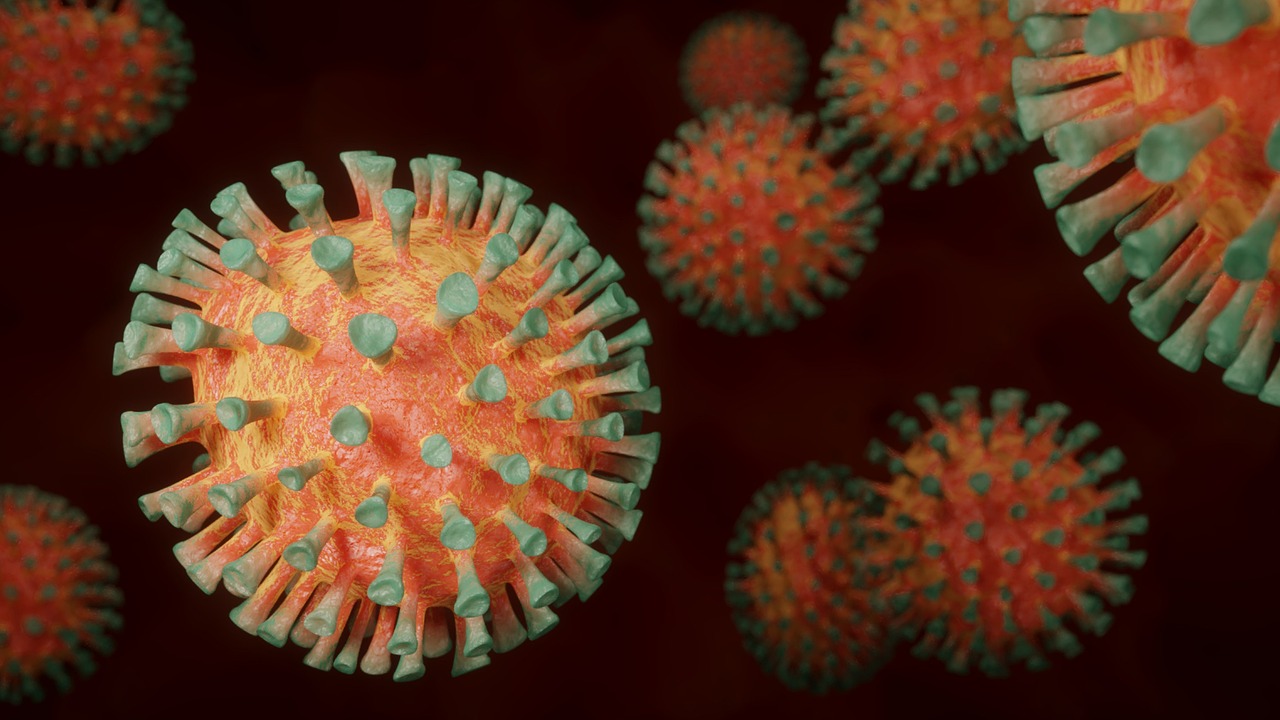
Zika Virus: Causes, Symptoms, Prevention, and Treatment
Table of Contents
The Zika virus, a mosquito-borne flavivirus, gained global attention after a major outbreak in Brazil in 2015, which subsequently spread to many countries in the Americas. It has been linked to serious birth defects and neurological disorders, prompting widespread concern.
This article provides an in-depth exploration of the Zika virus, including its causes, symptoms, prevention strategies, and treatment options.
What is the Zika Virus?
The Zika virus is a member of the Flaviviridae family, which also includes dengue, yellow fever, and West Nile viruses. It was first identified in the Zika Forest of Uganda in 1947 in rhesus monkeys and later in humans in 1952 in Uganda and Tanzania. For several decades, it caused only sporadic cases in Africa and Asia until the large outbreaks in the Pacific and the Americas in the early 21st century.
Causes and Transmission
The primary mode of Zika virus transmission is through the bite of infected Aedes mosquitoes, particularly Aedes aegypti and Aedes albopictus. These mosquitoes are also vectors for dengue, chikungunya, and yellow fever viruses.
Other Modes of Transmission
1. Mother-to-Child Transmission: The virus can be transmitted from a pregnant woman to her fetus, potentially leading to severe birth defects.
2. Sexual Transmission: Zika can be transmitted through sexual contact from an infected person to their partner.
3. Blood Transfusion: There have been cases of Zika virus transmission through blood transfusion.
4. Laboratory Exposure: In rare instances, laboratory workers have been infected with Zika virus through occupational exposure.
Symptoms of Zika Virus Infection
The symptoms of Zika virus infection are generally mild and can resemble those of other viral infections. Many people infected with Zika virus may not show any symptoms. When symptoms do occur, they typically appear 2 to 7 days after being bitten by an infected mosquito and can last for several days to a week.
Common Symptoms
1. Fever: A mild fever is one of the most common symptoms.
2. Rash: A maculopapular rash (a flat, red area covered with small bumps) is often seen.
3. Joint Pain: Pain, especially in the smaller joints of the hands and feet, is frequent.
4. Conjunctivitis: Red eyes or conjunctivitis (pink eye) without pus is a notable symptom.
5. Muscle Pain: Myalgia or muscle aches can occur.
6. Headache: Mild headaches are often reported.
Severe Complications
While Zika virus infections are usually mild, there are significant complications associated with the virus, particularly in pregnant women and their babies:
1. Congenital Zika Syndrome (CZS): This is a distinct pattern of birth defects found in fetuses and newborns infected with the Zika virus in utero. It includes severe microcephaly (small head size), brain damage, eye defects, hearing loss, and impaired growth.
2. Guillain-Barré Syndrome (GBS): This rare neurological disorder can occur in adults following Zika virus infection. It involves the immune system attacking the nerves, leading to muscle weakness and, in severe cases, paralysis.
Diagnosis of Zika Virus
Diagnosing Zika virus infection involves a combination of patient history, symptom assessment, and laboratory tests. Given the overlap of symptoms with other diseases like dengue and chikungunya, accurate diagnosis is crucial.
1. Patient History and Symptom Assessment: A detailed history of travel to areas with active Zika virus transmission, mosquito bites, and symptoms is taken.
2. Laboratory Tests:
- Reverse Transcriptase-Polymerase Chain Reaction (RT-PCR): This test detects viral RNA in blood, urine, or other body fluids and is most effective within the first week of symptom onset.
- Serological Tests: Tests such as enzyme-linked immunosorbent assay (ELISA) detect antibodies (IgM) against the Zika virus. However, cross-reactivity with other flaviviruses can occur, necessitating confirmation with more specific tests like the plaque reduction neutralization test (PRNT).
Prevention of Zika Virus Infection
Preventing Zika virus infection primarily involves measures to avoid mosquito bites and reduce mosquito populations. As there is currently no vaccine available, personal protection and community-level interventions are crucial.
Personal Protection Measures
1. Use of Insect Repellents: Apply insect repellents containing DEET, picaridin, IR3535, or oil of lemon eucalyptus to exposed skin. Follow product instructions for safe use, especially in children and pregnant women.
2. Wear Protective Clothing: Wear long-sleeved shirts, long pants, socks, and hats to reduce skin exposure to mosquitoes.
3. Use Mosquito Nets: Sleep under mosquito nets, especially in areas with high mosquito activity.
4. Install Window and Door Screens: Use screens on windows and doors to prevent mosquitoes from entering indoor spaces.
5. Use Bed Nets: If sleeping areas are not air-conditioned or screened, use bed nets to prevent mosquito bites during sleep.
Community-Level Interventions
1. Mosquito Control Programs: Implement and support community mosquito control programs that involve spraying insecticides, eliminating mosquito breeding sites, and public education campaigns.
2. Remove Standing Water: Regularly empty and clean containers that hold water, such as flower pots, buckets, bird baths, and discarded tires, to eliminate mosquito breeding sites.
3. Use Larvicides: Apply larvicides to water storage containers that cannot be covered or emptied to kill mosquito larvae.
Prevention of Sexual Transmission
1. Condom Use: Use condoms correctly and consistently during sexual activity to reduce the risk of sexual transmission of Zika virus.
2. Abstinence: Consider abstaining from sexual activity during pregnancy if a partner has traveled to or lives in an area with active Zika virus transmission.
Travel Precautions
1. Avoiding Travel: Pregnant women or those planning to become pregnant should avoid travel to areas with active Zika virus transmission.
2. Precautionary Measures: If travel is necessary, follow all recommended personal protection measures to avoid mosquito bites.
Treatment of Zika Virus Infection
There is no specific antiviral treatment for Zika virus infection. Management primarily focuses on relieving symptoms and providing supportive care.
Symptomatic Treatment
1. Rest: Adequate rest is important to help the body recover.
2. Hydration: Drink plenty of fluids to prevent dehydration, especially if experiencing fever.
3. Pain and Fever Relief: Use acetaminophen (paracetamol) to reduce fever and alleviate pain. Avoid nonsteroidal anti-inflammatory drugs (NSAIDs) like aspirin and ibuprofen until dengue virus infection is ruled out to prevent the risk of bleeding.
Management of Complications
1. Congenital Zika Syndrome (CZS): Multidisciplinary care is essential for infants with CZS, including neurologists, pediatricians, ophthalmologists, and developmental specialists. Early intervention programs and supportive therapies can help manage developmental delays and other complications.
2. Guillain-Barré Syndrome (GBS): Hospitalization may be necessary for individuals with GBS. Treatments include intravenous immunoglobulin (IVIG) therapy or plasmapheresis to reduce the severity and duration of symptoms. Supportive care, including respiratory support and physical therapy, is crucial during recovery.
Monitoring and Follow-Up
1. Pregnant Women: Pregnant women with confirmed or suspected Zika virus infection should have regular follow-up with their healthcare provider to monitor fetal development and detect any potential complications early.
2. Infants: Infants born to mothers with Zika virus infection during pregnancy should undergo regular assessments to monitor growth, development, and neurological function.
Global Response and Research Efforts
The global response to the Zika virus outbreak has involved coordinated efforts from international health organizations, governments, and research institutions. Key areas of focus include:
1. Surveillance and Monitoring: Enhanced surveillance systems to detect and track Zika virus outbreaks and monitor trends in infection rates.
2. Public Health Education: Public awareness campaigns to educate communities about Zika virus transmission, prevention measures, and the importance of seeking medical care.
3. Research and Vaccine Development: Ongoing research to develop safe and effective vaccines and antiviral treatments for Zika virus. Clinical trials are underway to test potential vaccine candidates.
4. Vector Control Strategies: Innovative approaches to mosquito control, such as the release of genetically modified mosquitoes and the use of Wolbachia bacteria to reduce mosquito populations and their ability to transmit the virus.
Conclusion
The Zika virus remains a significant public health concern due to its potential to cause severe birth defects and neurological complications. Understanding the causes, symptoms, prevention strategies, and treatment options is crucial for managing and reducing the impact of Zika virus infection.
Preventive measures, such as avoiding mosquito bites, implementing community mosquito control programs, practicing safe sex, and following travel precautions, are essential in reducing the risk of Zika virus transmission. While there is no specific antiviral treatment for Zika virus infection, supportive care and symptom management play a vital role in recovery.
Ongoing research and global efforts aim to develop vaccines and improve vector control strategies to combat the spread of Zika virus. By staying informed and taking proactive measures, individuals and communities can work together to protect themselves and others from the risks associated with Zika virus infection.
Continue reading: Top 5 Best Meal Replacement Shakes for Weight Loss


